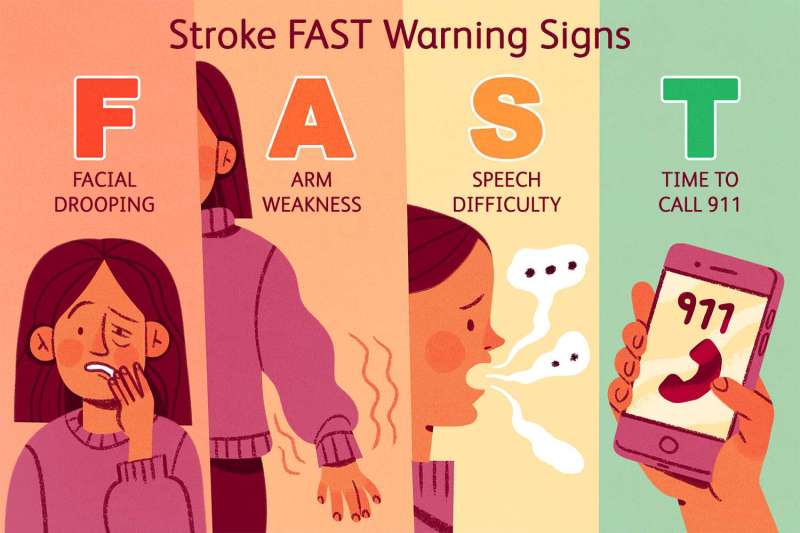What To Do When Someone Is Having A Panic Attack – Seeing someone struggling with anxiety and panic attacks can be really difficult. It’s normal to feel unsure of what to do in those moments. And it can be even more challenging when it goes public. But here’s the good news: There’s a lot you can do to help someone experiencing an attack.
Unfortunately, many people often do not fully understand what this anxiety is like. Symptoms of anxiety disorders are not always visible, making it easy for others to assume that the person is exaggerating or faking it.
What To Do When Someone Is Having A Panic Attack

But it’s important to recognize that these experiences are quite common. And knowing how to support someone during these episodes can make a significant difference to their well-being.
Providing Effective Seizure First Aid: What To Do When Someone Is Having A Seizure
Whether it’s at home or in public, knowing what to do (and what not to do) can help you provide them with the compassionate care they need.
Some people use the terms “panic attack” and “anxiety attack” interchangeably, but they are not the same thing. They have similar symptoms, such as dizziness, shortness of breath, and rapid heartbeat.
But anxiety and panic have different characteristics, and mental health professionals use these terms for specific disorders and symptoms. The term “anxiety attack” is not defined in the DSM-5, and “anxiety” is often used to describe a core feature of many of the conditions identified under the heading of anxiety disorders. It is also important to know the difference between a panic attack and a heart attack.
So, what is the difference between an anxiety attack and a panic attack? We can best describe it in terms of the intensity of the symptoms and the length of time the main symptoms appear.
Do’s And Don’ts When Someone Is Having An Anxiety Attack
When someone is in the grip of a panic or anxiety attack, it is natural to want to provide immediate support. But knowing the right steps to take can make all the difference.
When you support someone during a panic or anxiety attack, it’s normal to feel scared or overwhelmed. However, your ability to remain calm is essential to providing them with the support they need. By remaining calm, you provide a stable anchor amidst the storm of emotions they are experiencing.
By taking care of your own well-being and maintaining a sense of calm, you can create a safe and supportive environment for others as you navigate their anxiety or panic attacks together.

When someone is experiencing anxiety or panic attacks, it’s natural to feel compelled to ask if it’s okay. But it’s important to be mindful of the impact of our words and the speed with which we ask questions.
Someone Is Having A Mental Breakdown In Public. What Is The Compassionate Way To Respond?
Can add pressure and make them feel compelled to relieve their pain quickly. Instead, let empathy guide your interactions, making sure your words and actions come from a place of understanding and compassion.
But you should also be prepared that their ability to interpret and respond may be compromised due to the overwhelming emotions they are experiencing. And that’s okay! Pace your questions to match their emotional state, allowing them to respond when they’re ready.
When supporting someone during an anxiety or panic attack, it’s important to pay attention to non-verbal cues – they can provide valuable insight into what actions are comforting for them.
Watch their posture and movements. Are they tense and rigid or more relaxed? Do they seem restless or bored?
Heart Attack First Aid
Adjust your actions based on their body language. For example, offering a gentle touch or a comforting hug can provide reassurance if they seem open to physical contact.
Touching someone during a panic attack should be approached with caution and respect for their personal boundaries. While physical touch can be comforting for some, it can be distressing or triggering for others, especially during times of heightened anxiety.
If you’re not sure if touching would be helpful or appropriate, it’s best to ask the person directly if they want comforting touch or if they prefer space.

Pay attention to their facial expressions. Do they show signs of fear, distress, or discomfort? Or do you see a slight relaxation in their facial muscles?
Things To Do If Someone Is Having A Heart Attack
If their expressions indicate stress, consider using calming and soothing techniques, such as speaking softly or using gentle, reassuring gestures.
Notice the rate and depth of their breathing. Rapid and shallow breathing is common during anxiety or panic attacks. Encourage them to take slow, deep breaths and consider engaging in breathing exercises to help regulate their breathing.
Take note of their eye contact or lack thereof. Some people prefer to avoid eye contact in moments of crisis. Respect their preferences and offer support without imposing direct eye contact, allowing them to feel comfortable.
Although this tip focuses on non-verbal cues, pay attention to any verbal cues they may provide. Listen to their words, tone of voice, and the overall message they convey. Acknowledge their feelings and experiences, provide validation and understanding.
How To Help Someone In Distress
Of course, everyone’s nonverbal cues can be different, so it’s important to tune in to a person’s unique responses. That way, you can adjust your actions and support them in the ways they need.
Validating one’s feelings is a powerful way to provide support and understanding during a panic or anxiety attack. It’s not about solving their problems or offering instant solutions. It’s about empathizing with their emotional experience and acknowledging their feelings as real and important, without judgment or dismissal.
During an acute anxiety or panic attack, the experience can feel surreal, as if the person is disconnected from their body or the present moment. Excessive fear and irrational thoughts can cause them to forget where they are and what is happening around them.

Grounding techniques work by engaging the senses and focusing attention on the immediate surroundings. They help create a bridge between troubling thoughts and the reality of the present moment.
What To Do When Someone Has A Stroke?
For example, a simple grounding technique involves physical touch. Encouraging the person to touch a physical object, such as a chair or a wall, can help trigger their senses and bring them back to their current reality.
Knowing what not to do when someone is having a panic/anxiety attack is just as important as knowing how to help.
Despite our best intentions, certain actions or reactions can actually worsen the situation or make the person feel more distressed. By avoiding these common actions, you can create a safer and more supportive environment for the person in need and for yourself.
When someone is having a panic attack, it is important not to downplay or minimize the intensity of their emotions. Comments like “
Steps To Talking To Someone You Trust
Instead, let them know that you take their feelings seriously and that you are there to support them during this challenging time.
Anxiety and panic attacks defy reason and logic. Trying to understand why they appear will only lead to frustration for you and your loved one.
A person experiencing an attack may not understand its cause at the time. So, instead of focusing on finding an explanation, focus on providing support to help them overcome the episode.
It’s important to remember that during a panic attack, the person you’re trying to support may not be in the best emotional or mental state to respond in a “typical” way. Despite your good intentions, they may react in harsh or hurtful ways.
When Symptoms Suggest Heart Attack, Waste No Time Calling 000
Try not to take their reaction personally and realize that it is a result of their increased anxiety rather than a reflection of your efforts to help them. You are doing great! Just allow them the space they need to navigate through the episode.
In moments of crisis, it’s natural to have a tendency to protect and minimize discomfort for your loved one. However, enabling their anxiety by helping them avoid challenging situations is important.
While this may seem like a way to provide immediate relief, ignoring frequent triggers can ultimately increase their anxiety in the long run.
Enabling behavior can hinder their progress in overcoming their fears and limit their personal growth. So, instead of shielding them from difficult situations, focus on helping them develop coping mechanisms and face their fears head-on.
First Aid: What To Do When Someone Has A Seizure
While it is important not to enable avoidance, it is equally important not to force someone to face their fear before they are ready. Pressuring them to deal with anxiety-provoking situations can strain your relationship and potentially worsen their crisis.
Instead, prioritize calming them during the acute moments of a panic attack rather than trying to immediately address the underlying cause of their anxiety.
By respecting their boundaries and allowing them to determine when they are ready to face their fears, you can foster a sense of trust and provide them with the support they need on their anxiety management journey.

Supporting someone after a panic attack is important to help them recover and regain a sense of stability. While the immediate symptoms may have subsided, it is necessary to provide continued care and understanding.
How To Help A Stroke Victim: Emergency And Long Term Steps
After a panic attack, it is important to create a supportive environment. Start by providing reassurance and letting the person know they are safe.
Don’t interrupt them immediately with questions or advice. Instead, prioritize providing a calming presence, providing comfort, and validating their experience. Allow them the space and time they need to recover at their own pace.
Anxiety and panic attacks don’t last long – some only for 5 minutes, others for 30 minutes. when
What to tell someone who is having a panic attack, what to do if someone is having panic attack, how to know when someone is having a panic attack, what do you say to someone having a panic attack, what not to do when someone is having a panic attack, what to do to help someone having a panic attack, what to do if someone is having a panic attack, what to do when someone is having a panic attack over the phone, what to do for someone having panic attack, what to say when someone is having a panic attack, what to do when someone is having a panic attack, what do when someone is having a panic attack






